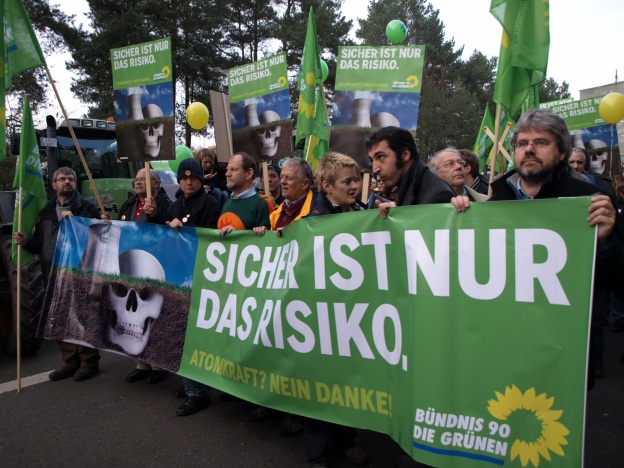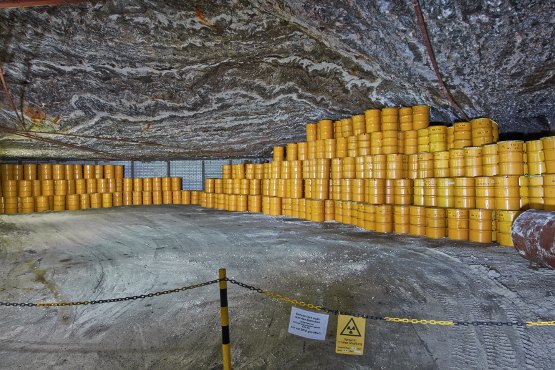Critics of Ontario Power Generation’s plan to build an underground nuclear waste dump on the shores of Lake Huron have always considered it absurd.…The fiercely debated plan to build what is called a Deep Geological Repository (DGR) has been going on for 14 years. In addition to Michigan lawmakers, more than 150,000 people have signed petitions, and 187 communities representing 22 million people have passed resolutions opposing the plan.
What has been in the works for decades is the construction of an underground permanent burial facility for all of Ontario’s low- and intermediate-level radioactive waste at the Bruce Nuclear Generating Station in Kincardine, Ontario. That’s less than a mile inland from the shores of Lake Huron and about 440 yards below the lake level. Kincardine, a small community about 114 miles upstream from Port Huron agreed to have the facility in their town but will be financially compensated. If and when the DGR is in place, an estimated 52 million tons of nuclear waste will be shipped to the site from other nuclear plants around Canada. Some of those discarded materials will remain toxic for more than 100,000 years as they are stored in limestone caverns. Once full, the shafts are to be sealed with sand, clay and concrete.
OPG has assured the residents and the public, “Years of scientific research have shown that the geology under the Bruce nuclear site is ideal for a DGR; it is some of the tightest rock in the world, impermeable limestone that has remained intact through 450 million years, multiple ice ages and glaciers.” However great limestone might be to say it can hold up to nuclear waste seems presumptuous considering the current reputation of the world’s other DGRs.“There are only three deep nuclear waste dumps on our entire planet to have held nuclear waste,” Fernandez said. “They have all failed and leaked.”The three sites include the Waste Isolation Pilot Project (WIPP) in New Mexico and two German sites, Asse II and Morslenben, both former salt mines.
The WIPP nuclear waste dump was supposed to contain its deadly waste for 10,000 years. Despite scientific assurance to the contrary, a mere 15 years into WIPP’s operational phase, a container exploded, spewing its deadly contents up to the surface, contaminating 22 workers and traveling into the biosphere and down to the next town, said Fernandez.
As part of an environmental assessment of the plan, a panel appointed by the federal government heard testimony by individuals and experts on both sides of the debate. Among the speakers to present evidence (in a well-documented report) that OPG was misleading the public including what they planned to store in the facility was Dr. Frank Greening. His report was thought to put an end to the plan. Greening is a scientist, who worked for more than 20 years in the nuclear division of OPG. He was one of their most senior men, a chemist in charge of overseeing the degradation of structural materials, especially the crucially important pipes in the primary cooling systems of CANDU reactors.
Greening submitted a report disclosing important factors that OPG failed to share among them being the radioactive inventory for the proposed repository. Using words like dirty rags and mops, which is how they described some of the waste to be stored, does not sound as alarming as old reactors or ion exchange resins that bear a significant amount of Carbon-14, a radionuclide that has a half-life of more than 5,700 years. “They’ve done a very sloppy job in looking at the hazards of the waste. You cannot just look at the radioactive properties but also its chemical properties,” Greening said. The chemical properties of the waste can lead to fires and explosions underground, which as critics fear, could cause a leak.
Building the DGR also requires a mining company to dynamite the rock formations. What about the potential risk to the nuclear plant itself, during construction of the DGR? “I could go on and on about the scenarios and this is what they’re not talking about,” Greening said.
Another point of concern that Greening feels everyone is overlooking is OPG’s degraded safety culture and its lackadaisical response to concerns about unforeseen accidents. As an example of its history, Greening cited several incidents at OPG that allowed workers (many of them local tradesmen) to be exposed to radioactive materials including plutonium dust.
But I believe one should always look for the least risky solution and that would be to build it inland, in the Canadian Shield (granite), in Manitoba, like they originally planned to do in the 1980s.”
Excerpts from Ontario’s plan to bury nuclear waste near Lake Huron continues, The Macomb Daily, Feb. 2017


